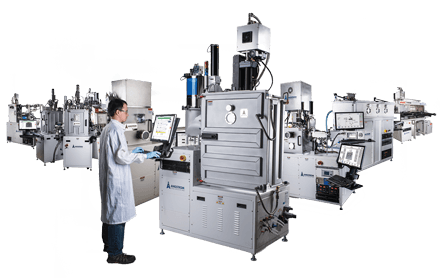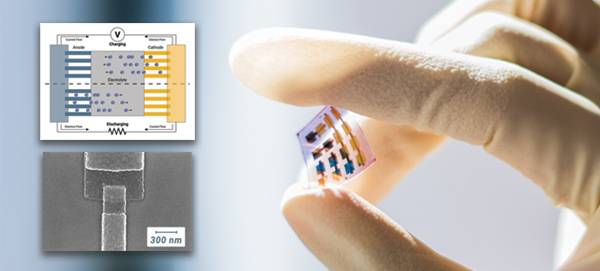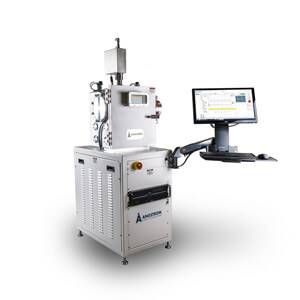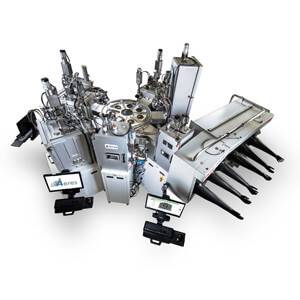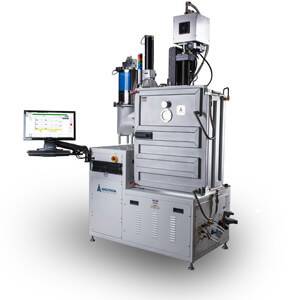Thermal Evaporation: Overview
Thermal evaporation is a popular physical vapor deposition technique because of its simplicity. During this process, a material in a high-vacuum environment is heated to its evaporation point by joule heating of the resistive boat in which it is located. The vaporized molecules then travel from the source to the substrate where they nucleate together, forming a thin film coating. A wide variety of materials can be deposited using this technique such as aluminum, silver, nickel, chrome, magnesium, among many others.
High vacuum is critical for resistive evaporation processes for two reasons; first, when gas is evacuated from a chamber, vapor molecules inside it can travel longer distances before they collide with a gas molecule. Collisions with gas molecules are undesirable during evaporation because they change the material vapor's direction of travel, adversely affecting the coverage of the substrate. When the gas pressure is below 10-5 Torr, the average distance of travel of a vapor molecule before colliding with a gas molecule (also called the mean free path) is greater than 1 meter, which is typically larger than the chamber dimensions. This means that the molecules would travel in a straight line from the source to the substrate, making resistive evaporation highly directional. This is an important characteristic when doing a deposition for a lift-off process in micro and nano-fabrication systems.
Secondly, high vacuum is also integral for film purity. Background gases in the chamber can lead to contamination of the growing film. This is especially true of oxygen and moisture; in applications such as organic light-emitting devices and organic photovoltaics, any presence of moisture or oxygen leads to the quenching of the active functional species responsible for light emission or light absorption. By pumping the partial pressure of these gases below the 10-6 Torr range, the purity of evaporated films, and devices thereof, is greatly improved.
Discover More...
Magnetron SputteringE-beam EvaporationBoat and Filament SourcesOrganic EvaporationCrucible HeatersAluminum EvaporationShall we discuss your project?
Please get in touch and we can collaborate to get you the answers and solutions you need.
How can we help you achieve your goals? What technical obstacles can our engineering team help you overcome? Please press the ‘Get in Touch’ button to get in contact with us, we’d be excited to hear about your research and help you in any way we can.


